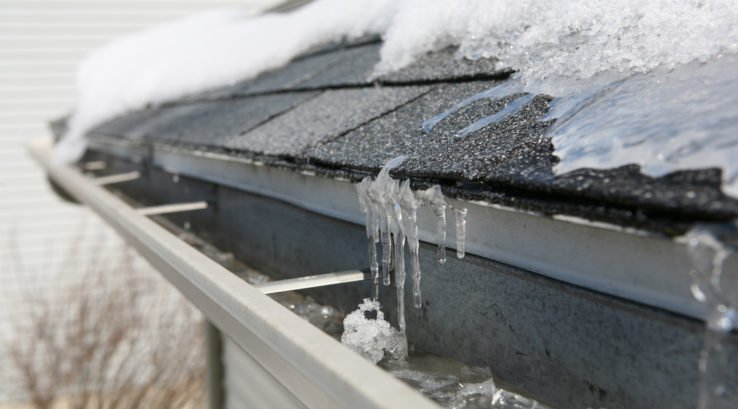Shingles are the most noticeable part of a roof, but they’re only one important part of a professionally built roof for your home. To construct a secure and watertight roof, roofers install several layers. These include shingles, a felt underlayment, and an ice and water shield.
Roof insulation, decking, and ventilation also play a part in protecting your home from harsh weather. Ice and water shields, also called protectors and barriers, are made from bitumen, a petroleum product that creates a seal to keep water from getting into your home. Learn how this keeps your home dry and where roof protection is needed most.
What is bitumen and how is it used to create an ice and water shield?
Bitumen is a thick, viscous petroleum waste product. After lighter portions of crude oil are removed, the remaining bitumen is excellent for creating a weather barrier to use on roofs. It creates a watertight seal around roofing nails and can even protect the roof if shingles are blown off. The shield should extend to the eaves, edges, and overhangs, covering the entire surface of the roof. Since bitumen also forms a vapor barrier between the roof and attic, ventilation is an important aspect to consider when laying a roof.
What are the main components of a roof?
A roof is composed of layers that work together to keep out the elements. Sturdy wooden roof decking is installed over the rafters, followed by the ice and water shield layer. The felt underlayment, also called black tar paper, comes next or a synthetic underlayment may be used. Roof shingles are the final component of the roof surface. Insulation may be added below the decking or between the joists on the attic floor. Attic ventilation is necessary to prevent moisture buildup. The kitchen and bathrooms should also be vented outside to keep moisture from being trapped in the home.
What are ice dams and how can they be prevented?
Snow on a roof sometimes melts during the day and then refreezes when temperatures drop at night. If this continues night after night, water and ice can penetrate underneath the shingles and get into the attic, causing damage to the ceiling, floors, and walls. Peaks, valleys, and chimneys on a roof need special attention because they’re more vulnerable to ice dams and wind-driven rain. The waterproof membrane of an ice and water shield on a roof can protect these areas. Skylights and dormers are other areas that need extra protection, along with lower-sloped roofs where snow can build up.
Do all homes need ice and water shield roof protection?
A roof ice and water shield is designed to prevent leaks when intense storms push water under shingles. The water can freeze and become ice, loosening shingles, and causing leaks. Overflowing gutters can cause the same issues, and in climates with a lot of snowfall, the barriers are a necessity. At a minimum, ice and water barriers should be installed underneath the flashing of dormers, chimneys, and other roof additions. You can trust the roofing professionals at Thompson Creek to give your roof a completely airtight and waterproof underlayment to protect it against the elements. Contact us today to discuss your roofing needs.


